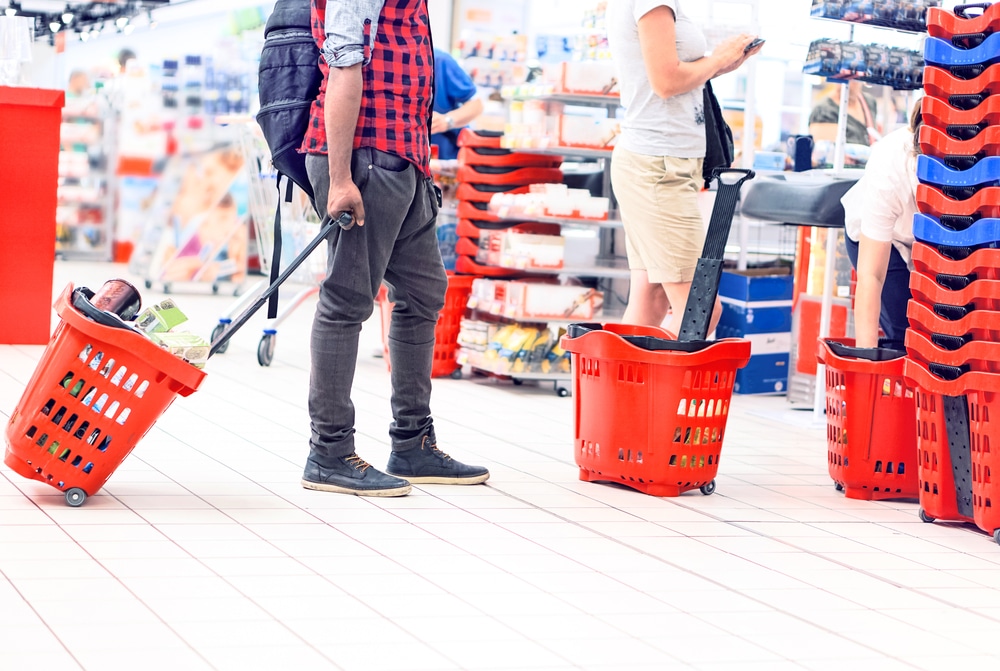Following a purchase, a shopper may feel excited by the newness, hopeful that the decision was the right one, and anxious about receiving the new product if it’s coming by mail. Showing you care about these swirling emotions during the post-purchase experience puts you in closer touch with your consumer base. In turn, these customers feel rewarded enough to hand you their loyalty—and that pays off. Increasing your customer retention rate by just five percent can increase profits by 25 to 95 percent.
The post-purchase experience is a core aspect of a sustainable, long-term marketing strategy, especially if companies don’t want to spend time continually chasing one new customer after another. Those hours and days after a purchase represent a pinnacle moment of the customer journey—one where brands can convert a new buyer into a loyal customer, or one where brands can lose that buyer to a competitor. By leveraging mobile during the post-purchase experience, brands can be sure their message reaches the consumer—no matter where they are.
A Mobile Post-Purchase Experience Is Critical to Customer Loyalty
Loyalty is not just about an individual making another purchase after the first one. It’s about sharing details of a purchase, reviews about a purchase, and using the experience to inform others considering a similar purchase. Shoppers who go online to favorably review their purchases and share positive experiences on social drive referrals, social media followings, website traffic, online sales, future in-store visits, and all-around brand affinity. The online realm represents a wealth of possibilities you can’t afford to miss out on.
It may seem intuitive to focus your efforts on virtual channels like social media or email. If you want them to share online, why not connect with them online? Couldn’t you just send out a post-purchase email and call it a day? But alas, you will be operating like a dinosaur company that missed the boat on evolution.
Research shows smartphone shoppers are the furthest along in the buyer’s journey. Consider a few recent stats provided by Pixel Union:
- 70% of mobile searches lead to direct action within the hour. (By comparison, it takes shoppers on desktop computers roughly a month to “warm-up” to a purchase.)
- 67% of shoppers admit to “digital window shopping” on smartphones “for fun.”
- 77% of digital window shoppers say they make “impulsive” purchases.
- 51% of smartphone users have purchased from a different company than they intended to because of information provided at a critical moment.
Modern companies understand that more and more customers access their social media accounts, email accounts, and websites on their mobile phones. In fact, 71 percent of shoppers have made purchases through mobile apps. With the average person using 40 apps per month and spending three hours a day in apps, you’d be missing a huge opportunity to create a post-purchase experience that sends the right message to the right consumer at the right time and place.
Best Practices to Leveraging Mobile to Engage Shoppers After a Sale
There are many ways to incorporate mobile into your post-purchase experience:
- Invite customers to sign up for mobile shipping updates. Shoppers like to know where their merchandise is, when it will be arriving, and whether there are any delays.
- React quickly to avoid bad publicity. Send a message to ask if the customer is satisfied with a recent purchase to take proactive action in addressing delivery problems.
- Thank shoppers and share your vision. Fifty percent of consumers say they’re more loyal to brands that share their values. Deliver a heavily branded mobile-friendly follow-up email.
- Deliver helpful content. If a shopper bought your brand’s food processor, send recipe tips. If a buyer purchased bathroom paint for you, offer up design tips. Offer customers the next best action.
- Use beacons to attract nearby shoppers to your brick-and-mortar. Geo-location gets shoppers through the doors by texting timely, relevant, attractive offers.
- Make sure your eCommerce site is designed for mobile. Seventy-three percent of consumers will switch to another brand if your site isn’t optimized for mobile devices.
- Personalize mobile sites and apps. Keep track of buyer histories and offer recommendations for complementary products or services.
- Ask for feedback. Ask and you shall receive. Seek shoppers’ opinions and they will feel as though you genuinely care about their happiness, and you’ll gain valuable feedback.
- Set auto-notifications. Remind shoppers about the opportunity to replenish their supply, whether you’re selling dog food, diapers, or beauty products.

Another aspect of the post-purchase experience to consider is the opportunity for customers to earn rewards. If customers are rewarded for purchasing a specific product, it is likely they will purchase from the rewarding brand again. Shopkick leverages this strategy by offering users rewards for purchasing from participating brands.
If customers are rewarded for purchasing a specific product, it is likely they will purchase from the rewarding brand again.
Shopkick Kicks Your Post-Purchase Experience Up a Notch
Shopkick is a third-party shopping app that gives partnering brands and retailers access to a loyal, highly engaged group of consumers who they may not have been able to reach with a proprietary app. Shopkick builds loyalty along the entire path to purchase by rewarding consumers for doing all of the things they normally do, like watching videos, walking into stores, engaging with products at-shelf, and making purchases. And unlike other shopping apps, Shopkick drives loyalty and sales using rewards rather than margin-busting coupons or discounts that dilute brand equity.
After scanning and purchasing a product from one of Shopkick’s brand partners, the shopper can then upload their receipt to gain additional kicks or reward points. And even after they’ve left a store or checked out online, the app reminds users to continue to take action to earn even more rewards. The positive experience leads Shopkickers to feel like they’ve just gotten a deal which, in turn, reminds them to consider the brand on a subsequent shopping trip.
At Shopkick, we’re always excited about new ways to leverage mobile technology on the path to purchase. If you’re looking for an innovative way to ramp up your post-purchase experience, contact us or continue reading about the success of our partners.
Image courtesy of Akhenaton Images





